Island Farms
A Step Back in Time

The blades of the windmill at Island Farm still turn slowly in the wind, just as they did when Adam Etheridge owned the farm. There are still sheep in the pasture, horses, and cows still roam the property.
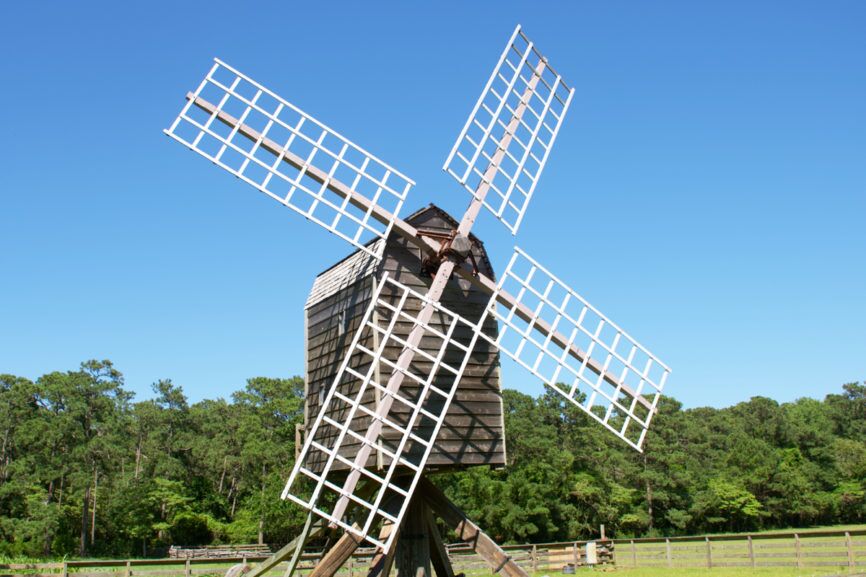
They raise their own crops—potatoes, corn, sweet potatoes, just as they did in 1850.
And that is the point of Island Farm on Roanoke Island—to take visitors back to what farm life was truly like in the mid-19th century.
Today, Island Farm is managed by the Outer Banks Conservationists (OBC) and substantial effort has gone into recreating the look and feel of a working farm on Roanoke Island in the 1850s.
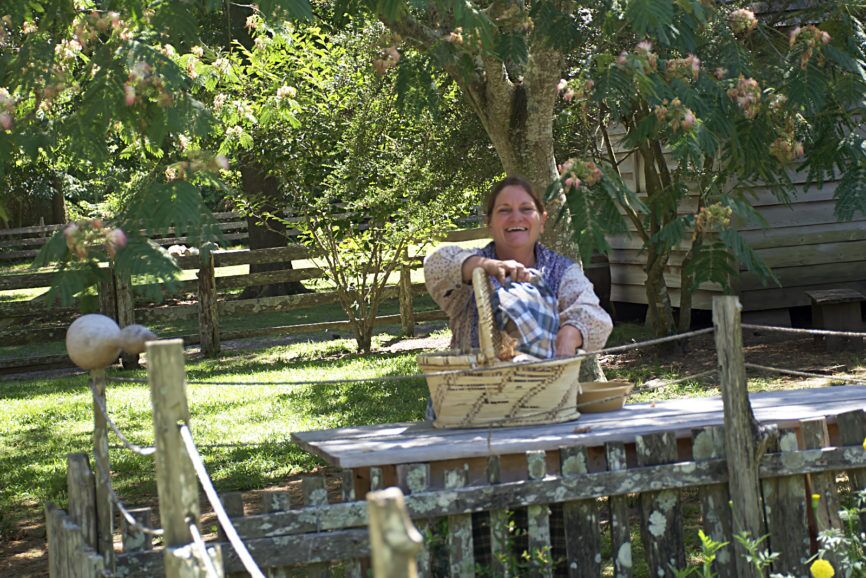
Considerable research assures historical accuracy. Before work on recreating the farm was begun, the OBC had historian and researcher Penne Smith document what life was like at the Etheridge homestead.
The book she produced for the OBC in 2001, The Etheridge Homeplace, a History, is a treasure trove of family lineage, historic documentation, and architectural information.
From her research, it is clear that it was not an easy life. Adam Etheridge owned 125 acres and would have been described as a yeoman or middle-class farmer. In fact, by the standards of antebellum Roanoke Island, he was considered quite well off. Records indicate he owned a horse, some oxen, cattle, sheep, and five slaves.
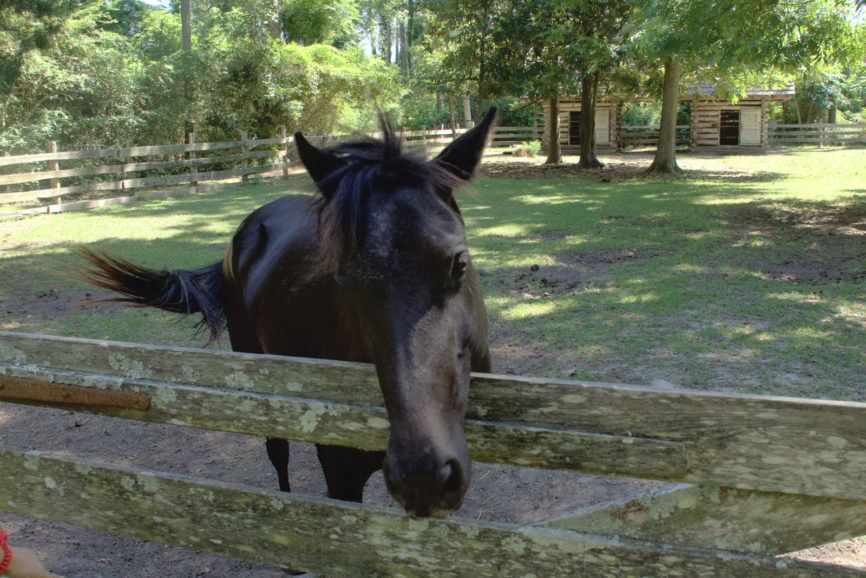
He didn’t farm all of his acreages; much of it was left for grazing and future development. The 20 acres he did farm seems to have been fairly productive. Smith writes in The Etheridge Homeplace, that the farm produced Irish potatoes, sweet potatoes, peas and beans, and corn. The corn was probably dent corn, a high starch, dry corn that is used for animal feed and when ground makes grits—which would have been one of the functions of the windmill, to grind the corn.
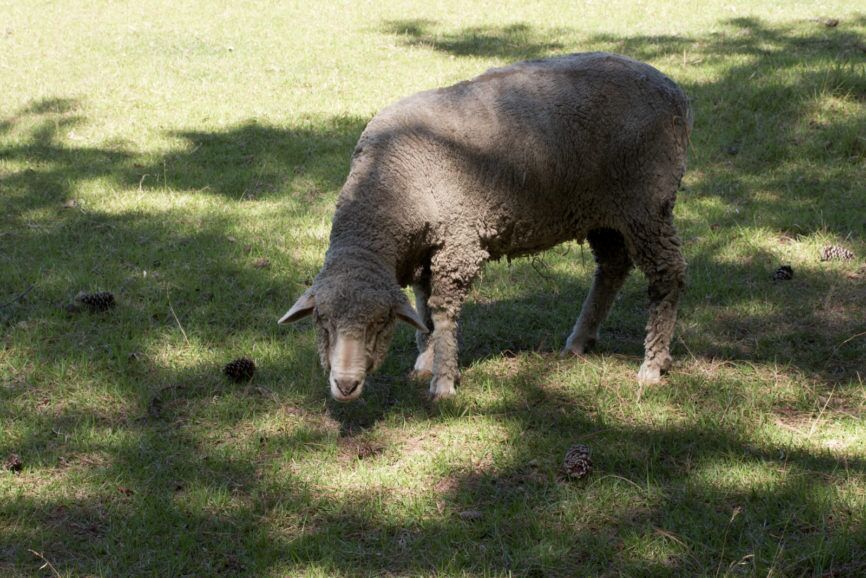
The farm, which had sheep, also produced wool. Pigs, dairy cows, a horse, and cattle were part of the farm as well.
The two-story house, built sometime between 1845 and 1852 was, evidently, larger and grander than almost any other home on Roanoke Island, so much so that Etheridge described his house as the “Manor Home.”

As manor homes go there wasn’t much to it. There was no lathe of plaster on the walls, just the boards laid across the frame of the house. There are no hallways, each room connects directly with the next room, with a set of stairs leading to the upstairs bedrooms.

But if plain, the house was well built surviving over 150 years largely intact until the OBC could begin the process of renovating the home and taking it back to the way it would have looked in the 1850s.
One of the more fascinating features of Island Farm is the crops that they raise. Very much the same crops that Smith listed in her survey of the property, with guidance from Gabe Maready, Island Farm’s Farm Steward, the land is surprisingly productive.
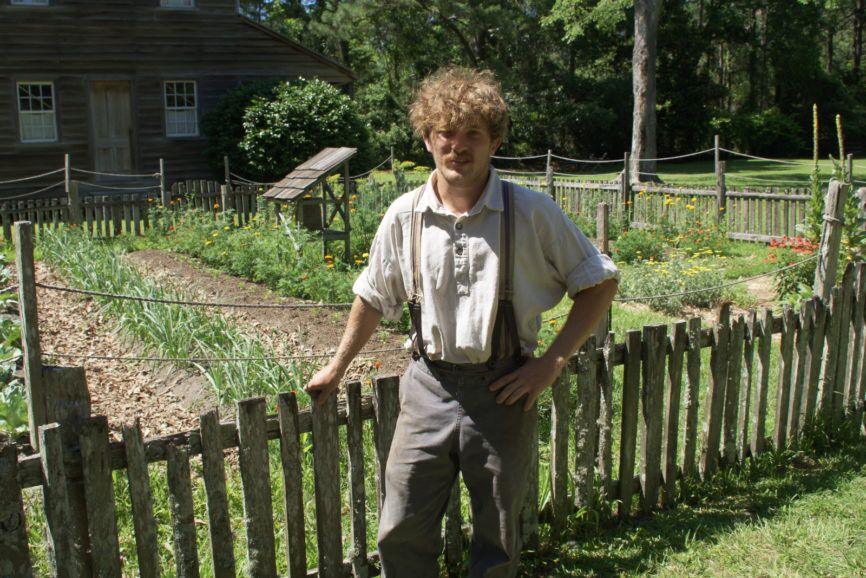
Maready uses the same methods and techniques to raise the farm’s produce that would have been used when Adam Etheridge owned the property. The farm animals are the source of fertilizer; he uses leaves to mulch between rows, and the crops thrive.
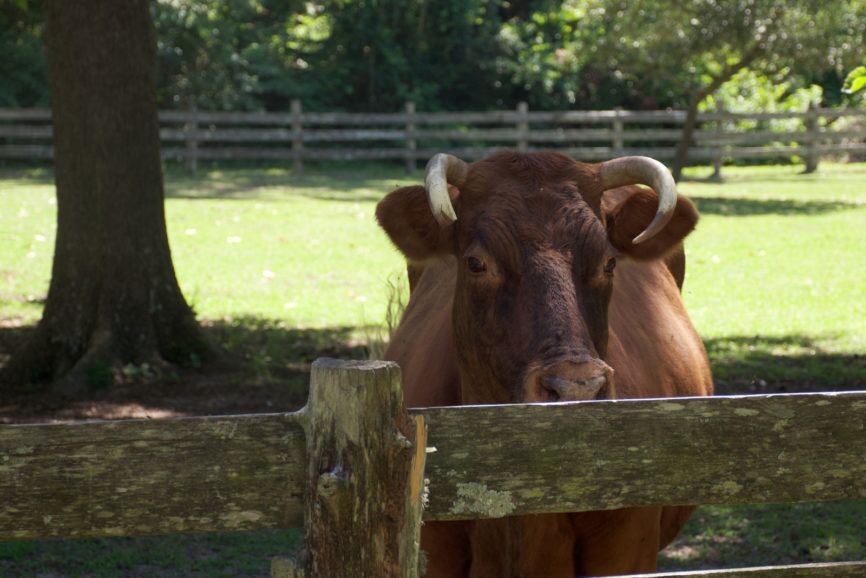
When the potatoes come in, in late May to early June, stop by and get some. They also plant an heirloom sweet potato, the Hayman sweet potato. A white sweet potato, at one time, was what most of the local farmers planted, but has subsequently been replaced by other varieties. However, the varietal is thriving at Island Farm. Stop by at the right time and backyard farmers can get sprouts of their own.
What makes Island Farm really wonderful, though, are all the activities. Much of it is geared toward children, there are also some great programs adults will enjoy as well. Or simply go to the farm, wander around and ask questions. It’s a fascinating place.
